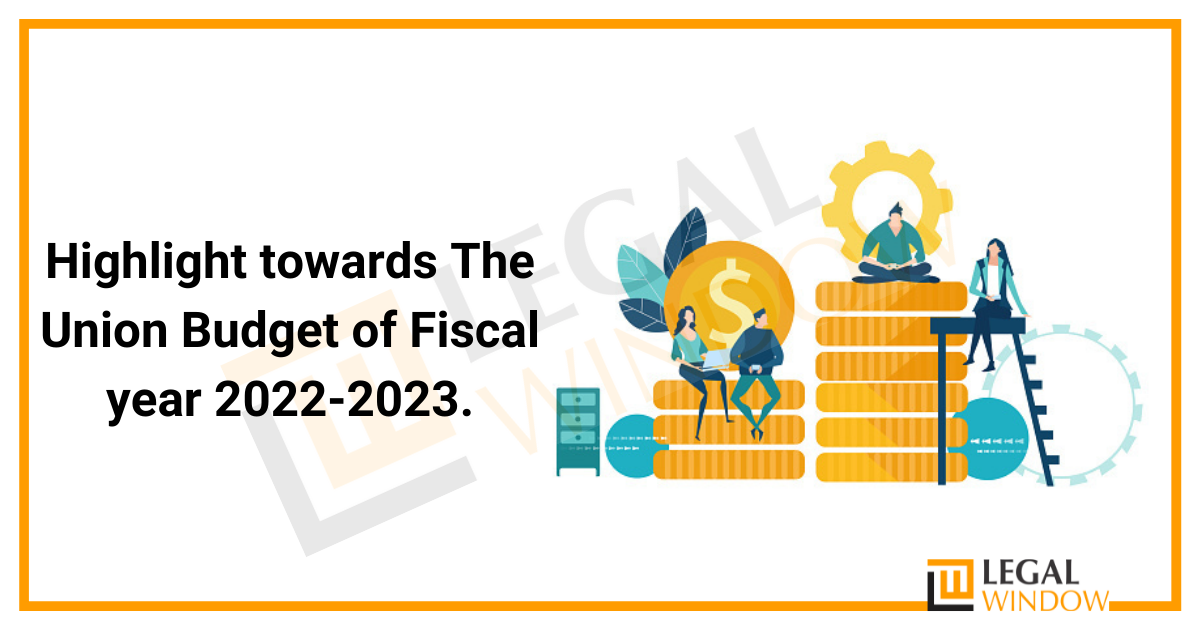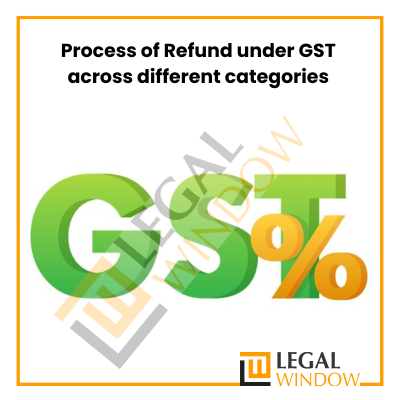Highlight towards The Union Budget of Fiscal year 2022-2023.
- February 2, 2022
- Latest News

Nirmala Sitharaman” The Finance Minister of India displayed the fourth Budget of the Modi 2.0 government today (1st of February). The budget recommendations for this fiscal year are focused on health and well-being, infrastructure, inclusive development, energy transition and climate action, investment financing, and ‘Minimum Government, Maximum Governance,’ she stated. India’s economic growth is predicted to be the greatest among all large economies, at 9.2 percent. In 14 sectors, 60lakh new jobs will be created under the productivity-linked incentive scheme.
Further goes, digital currency, e-passports, and a slew of infrastructure projects are among the major announcements. Subsequently, Edible oil, wearable electronics, replica jewellery, and polished diamonds will all be less expensive. The fiscal deficit is 6.9% of GDP. Persons with disabilities have been granted tax reduction. There will be no changes to personal income tax rates.
In a brief, here are the highlights of the Budget;
Expenditure and deficit
- By 2025/26, a budget deficit of 4.5 percent of GDP is proposed.
- In 2022/23, the budget deficit is expected to be 6.4 percent of GDP.
- 6.9% of GDP estimated budget deficit for 2021/22 50-year interest-free loans over and above standard borrowing authorised for states
- For the fiscal year 2022/23, the scheme for financial support to states for capital expenditure outlay will be Rs 1lakh crore.
- The next financial year’s disinvestment profits receipts are expected to be Rs 65,000crore, down from the current year’s mobilisation of Rs 78,000crore.
Budget in terms of agricultural sectors:
- To reduce imports, a streamlined plan to improve domestic oilseed production will be implemented.
- Under MSP operations, the government will pay Rs 2.37 lakh crore for wheat and paddy procurement.
- Kisan drones for crop evaluation, land records, and insecticide spraying are projected to create a wave of technology in the agricultural industry.
- The Ken Betwa river connection project, estimated to cost Rs 44,605 crore, has been announced.
- The drafts of DPRs for five river linkages have been completed.
- Finance start-ups as a means of assisting rural businesses.
- Along the Ganga river corridor, natural farming will be promoted.
- To enhance agricultural output and income, the government will promote chemical-free natural farming across the country.
- Small farmers and MSMEs will benefit from new railway products.
- NABARD will assist the creation of a co-investment fund to finance agriculture and rural enterprise start-ups that are related to the farm produce value chain.
- Ministries for procurement will establish an entirely paperless, e-bill system.
- Farmers will be given financial assistance to begin agro forestry.
A step towards digital currency
- Losses resulting from the sale of virtual digital assets cannot be compensated by other sources of income.
- Starting in 2022-23, a block chain-based digital rupee will be introduced.
- Virtual digital asset income will be taxed at a rate of 30%.
- To introduce a taxation structure for virtual digital assets
A view in educational sectors.
Based on a networked hub structure, a Digital University would be constructed and created in several Indian languages.
To compensate for the loss of formal education due to COVID-19, One Class, One TV channel would be increased from 12 to 200 TV channels to give supplementary education in all regional languages.
Also, government is aiming towards to introduce the National Skill Qualification Framework (NSQF) in order to meet the changing needs of the sector, and encouraging states to alter agricultural university curriculums to satisfy the needs of natural, low-cost, and organic farming, as well as modern-day agriculture.
Finance status
- All 1.5lakh post offices would be connected to the central banking system, allowing for financial inclusion and account access via online banking, mobile banking, ATMs, and other means.
- RBI proposes to launch the Digital Rupee in 2022-23, based on block chain technology.
- Efforts will be made to increase private capital in the infrastructure sector.
- States would receive a financial aid of Rs 1lakh crore in 2022-23 to help them catalyse investment.
- By 2023, the digital rupee will be in use.
- IBC amendments to enhance efficiency of resolution process
- Facilitate cross-border insolvency resolution
- 75 digital banks in 75 districts will be set up by scheduled commercial banks to encourage digital payments
- International arbitration centre will be set up in GIFT city to provide faster dispute resolution
- World-class university to be allowed in GIFT IFSC free from domestic regulation, says Finance Minister.
Defence sector
- Through the SPV model, private industry will be encouraged to take up the design and development of military platforms and equipment in conjunction with DRDO and other organisations.
- The government has pledged to reducing imports and promoting self-reliance in the defence sector, with 68% of capital allocated to domestic industry.
- In 2022-23, 68 percent of the defence capital procurement budget will be allocated to domestic industry (up from the 58 percent last fiscal)
Infrastructural review
- Auctions for 5G spectrum will be held in 2022.
- The production-linked strategy will include a design-led manufacturing scheme for 5G.
- To award contracts for the installation of optical fibre in rural areas, with a completion date of 2025.
- In 2022/23, 480 billion rupees will be made aside for affordable housing.
- An additional 195 billion rupees would be allocated for production-linked incentives for solar equipment manufacturers.
Taxation reliefs
- The duty-free status of steel scrap for small and medium-sized firms will be extended for another year.
- Stainless steel, flat items, and high steel bars will no longer be subject to customs duties.
- From October 2022, unblended petrol will be subject to a 2 rupee per litre surcharge.
- Certain chemical import duties are being decreased.
- Employer contributions to state government employees’ NPS accounts are now eligible for a 14 percent tax deduction.
- For cooperative societies with an annual income of between Rs 1crore and Rs 10crore, the proposal will cut the surcharge to 7%.
Economy status in terms to final budget
- Micro-all-inclusive welfare, digital economy and biotech, tech-enabled development, energy transformation, and climate action are all aimed at complementing macro-growth.
- From Rs 5.54 lakh crore to Rs 7.50 lakh crore, the capex target has increased by 35.4 percent. The effective capex for FY23 is expected to be Rs 10.7 lakh crore. India’s growth rate is the greatest among all major economies, and we are now well-positioned to face difficulties.
Additional highlights stated by Finance Minister.
The essential spectrum auction for the launch of 5G mobile services by commercial telecom companies will take place in 2022. As part of the PLI initiative to provide cheap internet and mobile connectivity in rural and remote locations, a design-led manufacturing scheme will be introduced for the 5G ecosystem.
5 percent of the annual collection under the USOs fund will be dedicated to enable cheap broadband and mobile service and proliferation in rural areas. This will support and promote technology development and commercialization.
PM Awas Yojana allocated with Rs 48, 000crore
In 2022-23, 80lakh dwellings would be completed for PM Awas Yojana beneficiaries; 60,000 houses will be identified as PM Awas Yojana beneficiaries in rural and urban locations. 60,000crore has been set aside to provide tap water to 3.8crore households. 80lakh families would be identified for the affordable housing scheme in 2022-2023.
Conclusion
Finance Minister Nirmala Sitharaman presented a capital expenditure-driven Budget intended at restoring the COVID-hit economy and creating more jobs over the next 25 years, aided by higher-than-expected revenues. However, the proposal will leave India with a budget deficit of 6.4 percent of GDP in 2022-2023, which is higher than the median of 6.1 percent projected in a Bloomberg study. She predicted that the government will complete the current fiscal year with a deficit of 6.9% of GDP, compared to a target of 6.8%.In her 90-minute address, she proposed four Budget priority areas: private investment in the transportation sector under the PM Gati Shakti project, inclusive development, productivity optimization, and financial investment growth.
LegalWindow.in is a professional technology driven platform of multidisciplined experts like CA/CS/Lawyers spanning with an aim to provide concrete solution to individuals, start-ups and other business organisation by maximising their growth at an affordable cost. Our team offers expertise solutions in various fields that include Corporate Laws, Direct Taxations, GST Matters, IP Registrations and other Legal Affairs.
Categories
- Agreement Drafting (23)
- Annual Compliance (11)
- Change in Business (36)
- Company Law (147)
- Compliance (88)
- Digital Banking (3)
- Drug License (3)
- FEMA (17)
- Finance Company (42)
- Foreign Taxation (6)
- FSSAI License/Registration (14)
- GST (116)
- Hallmark Registration (1)
- Income Tax (199)
- Latest News (34)
- Miscellaneous (164)
- NBFC Registration (8)
- NGO (14)
- SEBI Registration (6)
- Section 8 Company (7)
- Start and manage a business (20)
- Startup/ Registration (126)
- Trademark Registration/IPR (40)
Recent Posts
About us
LegalWindow.in is a professional technology driven platform of multidisciplined experts like CA/CS/Lawyers spanning with an aim to provide concrete solution to individuals, start-ups and other business organisation by maximising their growth at an affordable cost.







